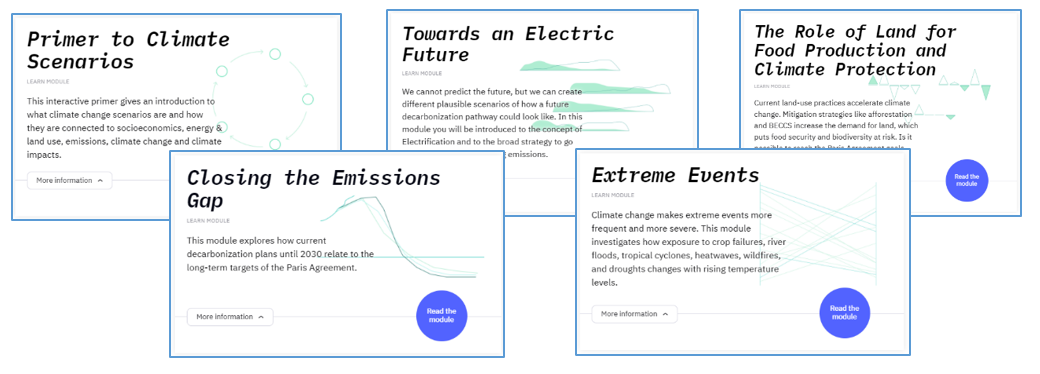Just launched: Visit the SENSES Climate Change Scenario Toolkit.

The Climate Change Scenario Toolkit created in the SENSES project supports the understanding of the new generation of climate change scenarios. These scenarios are more integrative than ever and link three columns of input data:
1. Climate change projections
are projections about different components of the climate system to the future. They provide information (e.g. temperature, precipitation, extreme events) on how the climate system would evolve for specific preconditions, e.g. level of CO2 concentration.
2. Climate impact scenarios
are scenarios about potential impacts of climate change. They take into account various affected sectors like the water, agriculture, fisheries, marine ecosystems, coastal infrastructure sectors. Climate change projections are used as input for climate impact models to calculate e.g. changes in maize yields. Climate impact scenarios also depend on assumptions about future socio-economic developments (e.g. population, economic activity, technological progress etc.). Climate impact scenarios provide data (e.g. potential damage, floods) on how the world could look like if specific warming scenarios take place.
3. Mitigation scenarios
These scenarios are meant to describe possible solutions to mitigate climate change. They delineate possible futures about the development of energy, economy, land use and emissions in the world, which are constrained by the fact that the global mean temperature will not exceed an explicit increase (e.g. 2 ° Celsius). As a reference case also scenarios with no or weak climate policies are generated. All of these scenarios depend on assumptions about future socio-economic developments (e.g. population, economic activity, technological progress etc.). Mitigation scenarios and the corresponding reference scenarios provide information (e.g. macro-economic investments, technology costs, land use, greenhouse gas emissions) on how the social and economic system could look like for different levels of climate change mitigation.